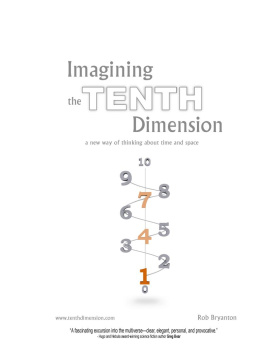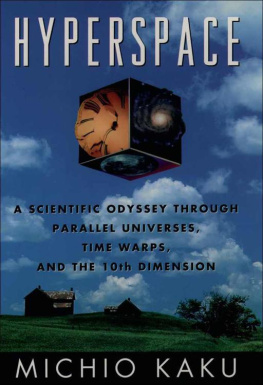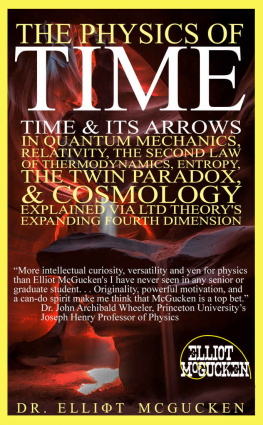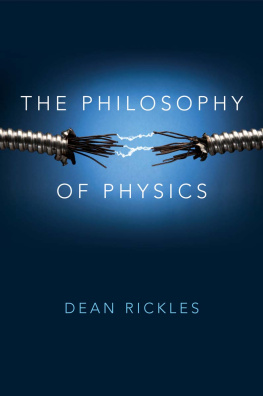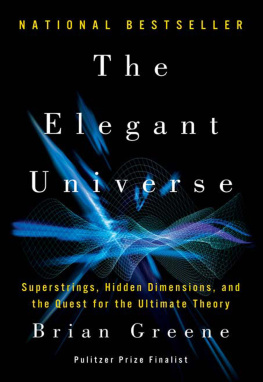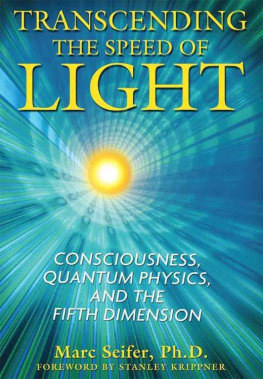To Gail, Todd and Mark:
my family, my debating team, my friends.
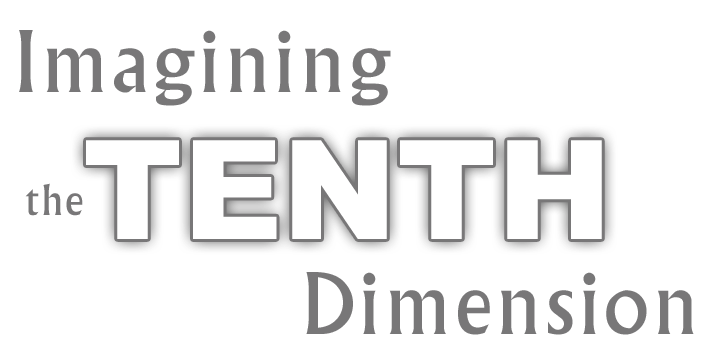
Hi, my name is Rob Bryanton. The ideas in this Ebook took many hundreds of hours of writing and polishing to get to what you see before you. If you have purchased this copy, thank you very much for your support! If you have not paid for this copy, please send an amount you think is appropriate via PayPal to sales@tenthdimension.com (I would suggest $10). This pdf file has no copy protection on it because I trust you to do the right thing dont let me down. Enjoy the journey!
by Rob Bryanton
Published by Talking Dog Studios, Inc.
All text and graphics 2006, 2007 by Rob Bryanton
All rights reserved. No part of this work may be reproduced, stored in a retrieval system, or transmitted, in any form or by any means graphic, electronic, mechanical, photocopying, recording or otherwise without the prior written permission of the author.
First published in Canada June 2006 by Talking Dog Studios, Inc.
National Library of Canada Cataloguing in Publication
Bryanton, Rob, 1954
Imagining the Tenth Dimension / Rob Bryanton
Includes index.
ISBN-13: 978-1-42510380-4
ISBN-10: 1-4251-0380-4
1. Space and Time. 2. Superstring theories.
3. Cosmology.
4. Reality.
I. Title.
BD701.B79 2006
C2006-902678-5
Production Credits
Typesetting/layout by Rob Bryanton
Illustrations for book & tenthdimension.com website by Jason Orban , OH! Media Website design for tenthdimension.com by Trent Haus/Jason Orban, OH! Media Contact OH! Media at www.ohmedia.ca
Contact the author at rob@tenthdimension.com For discussion group and further info, go to www.tenthdimension.com
Printed in Canada
Second Edition (revised)
10 9 8 7 6 5 4 3 2
PREAMBLE
As I write this, two million people have visited the tenth dimension website since it was launched in July 2006. I have always been careful to make it clear to people that I am not a physicist and Im not pretending to be one: but the unique set of ideas I present in this project have created lots of debate throughout the world, which I welcome.
The framework for discussion that I advance in this book and on the website www.tenthdimension.com is not the one that is commonly accepted by todays physicists. Anyone wanting to know more about the currently established thinking behind physics and cosmology should refer to such excellent books as Programming the Universe by Seth Lloyd, Parallel Worlds by Michio Kaku, The Fabric of the Cosmos by Brian Greene, or Warped Passages by Lisa Randall.
I invite you to think of this as an entertaining diversion that for some people will have a strong and thought-provoking connection to their impression of how the world really works. A discussion forum at www.tenthdimension.com gives readers an opportunity to debate the concepts presented in these pages more fully.
Enjoy!
INTRODUCTION
Our universe is an amazing and humbling place. The planet we live on is filled with wondrous things, yet it is only an unimaginably tiny part of the cosmos. As our knowledge expands up beyond galaxies and down to the quarks and neutrinos, we pass through one incomprehensibly large order of magnitude after another, dwarfing us with the complexity of it all.
Now we have string theory adding yet another layer to the mystery. Reality, many of todays physicists tell us, is based upon the resonances of exquisitely small superstrings vibrating in something called the tenth dimension. This is a concept the average person simply has no way to deal with.
Tiny strings creating reality? And how can there even be ten dimensions? Most of us have barely gotten used to the idea of there being four.
The goal of this text is to provide the tools that will allow us to imagine the construction of ten dimensions. Along the way, well discuss a number of other mysteries, including the huge amount of Dark Matter and Dark Energy missing from the universe, quantum indeterminacy, and consciousness. This exploration will be based upon some of the current theories of reality being advanced by modern physics, but it will also introduce ways of looking at the relationship between physical space and time which fall outside the generally accepted viewpoint.
As an aside, anyone wanting to know more about the science behind superstrings and the tenth dimension ( as well as the eleventh dimension, which well also touch upon in these pages ) would do well to refer to such books as Parallel Worlds by Michio Kaku, or Brian Greenes The Fabric of the Cosmos. These books (as we already mentioned in the Preamble) introduce us to the people and science that led to superstrings becoming the current dominant theory of the nature of reality. These authors are also not afraid to deal with the more out there ramifications of modern physics, and sprinkle these books with fanciful examples from modern fiction and pop culture, creating eminently readable texts. Another recommended book is Warped Passages by Lisa Randall: an enlightening exploration of string theory and advanced topics such as branes, supersymmetry, and the duality of the tenth and eleventh dimensions. The tone of Randalls book is a bit more serious, although it too has a certain amount of whimsy. I have also become a big fan of Seth Lloyds Programming the Universe. Mr. Lloyd is an expert in quantum computing, and his book (which has nothing to do with string theory) shows us ways to imagine the origins of the universe which, in my opinion, align very nicely with the ideas I present here.
To be absolutely clear about this, the explanation of the ten dimensions you will find in these pages is not contained within the works of experts such as Kaku, Greene, Randall, or Lloyd, nor is it intended to imply that they would somehow endorse the conclusions about to be explored. Let me say from the outset that I realize the basic geometry concepts used in chapter one to arrive at my description of the ten dimensions will seem very simple indeed when compared to the challenging formulas and topologies used by string theorists in their research. Despite that, I would ask the reader to keep an open mind: sometimes, simple is better. I will argue in these pages that this simple viewpoint has many fascinating connections, not just to leading-edge physics and cosmology, but also to the average persons common sense knowledge of how the world really works.
Modern science asks us to accept the concept of ten dimensions as a topological construct that is essentially unimaginable to three-dimensional creatures such as ourselves: ten spatial dimensions happen to be where the mathematics of string theory work, and that is something we laymen just have to accept. In past decades there have been indications that the math works quite well in twenty-six dimensions too, but that idea is currently not in vogue.
This project began as a set of songs, twenty-six of which you will find referenced throughout this document as endnotes (like the one at the end of this paragraph).
Although my day job is composing music and sound for television series and films, most of these songs were written over the last twenty years not for shows but for my own personal enjoyment. They revolve around a ten-dimensional theory of reality which I, a non-scientist with an inquisitive mind, gradually developed through my own fascination with the hidden structures of the universe now being revealed by modern science. Like many people, I am particularly intrigued by the growing sense that there is a convergence beginning to take place between science and philosophy. Big questions about what is really happening when we perceive ourselves to be experiencing the physical world around us seem to be moving towards parallel conclusions from both camps: these ideas are major themes through this book and within the attached songs. In some cases the song lyrics amplify or provide a parallel commentary to the discussion taking place at that point in the text, while elsewhere they are simply echoing what has already been established. Song lyrics can be very useful for setting up repetitious patterns which help to reinforce an Imagining the Tenth Dimension idea. Hopefully these will add an enjoyable diversion to the discussions at hand.
Next page
